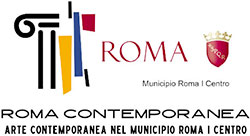Location: Piazza dei Satiri 48/49, 00186, Rome
Dates: Thursday, October 24 and Saturday, October 26 from 6:00 PM to 8:00 PM
On the occasion of Rome Art Week 2024, La Casa di Tela and the adjoining exhibition space at 48 Piazza dei Satiri present ME, Villalta. Passing the flame. Dedicated to the artistic universe of Villalta, the exhibition unfolds in two consecutive spaces, symbolizing the gesture of passing the torch between two generations. The flame is extended to illuminate a space that hosts a dual artistic time, momentarily overlapping, but living on its own and persisting to this day.
A first phase, that of Mariano Villalta, ended like a stifled flame. Though seemingly belonging to the past, Mariano's time is alive in the present and tangible. The visionary nature of his ideas makes him an artist eternally contemporary, as evidenced by the fact that the public traverses a space where thoughts and artistic expression intersect. An unprecedented presentation of his artistic archive guides the visitor in understanding a figure who, although associated with Informalism, resists conventional artistic classification. The archive contains photographic and documentary evidence of his work and his exchanges with institutions and artistic and intellectual figures from various parts of the world. It reveals an unusual approach for his time—leaning towards interculturality—considering that globalization in the art world was still far from being realized. He possessed a keen sensitivity—his illness fueled the movement of his art, manifesting through a painting that was almost oxymoronic in its relationship between signifier and meaning. "A visual scream or a profound silence," as he described it. A harmonious synthesis of technique and creative impulse, so impetuous that it arises, like an anarchist, to disrupt the tedious regularity of convention. On the surface, a message emerges shrouded in mystery, as if to give the observer a certain freedom of interpretation—though limited. The artist, shielded by deep intimacy, is active in his work of artistic exploration, enriched by the contemporaneity of a world moving at a frenetic pace, as it did yesterday and does today, increasingly tending toward homogenization. Now, the solution is not to flee; far more courageously, the artist invites us to a personal revolution through which we can reconnect with nature and our individuality.
A second phase then emerges, that of Esteban Villalta Marzi, revealed in its blossoming, like a flickering flame struggling to assert itself and slowly growing, fueled by oxygen that here is art, exploding in crackles, until it blazes with full intensity. At the dawn of his career in the 1970s and 1980s, the artist already expressed himself with an unusual artistic maturity, further evidenced by his inspiration from a fertile tradition of painters—rooted in his paternal heritage—and his ability to emerge with a new and entirely personal artistic expression, which over time would become a total negation of his father’s style. His language was born as a response to a profound desire for knowledge. Again, everything begins with an impulse, an initial gesture aimed at expressing something deeply rooted that reemerges, at this stage, as a possibility for representation. At the center is the body, or rather a figure suggested by an inexplicable tangle of lines, where it is difficult to discern boundaries, but one can clearly glimpse the form of a distressed humanity. Riding the wave of this initial surge, in the early 1980s, the artist was creatively stimulated by the vibrant *movida madrileña*, which he intensely experienced. These were bold years, marked by a release from the chains of Francoism, and the artist fully embraced this momentum, embarking on a new path that would introduce him to the public as a precursor of graffiti painting—this was the cycle of graffiti. From here, his career evolved through various thematic cycles, never abandoned by the artist, in a continuous blending where his origins are clearly recognized.
At the conclusion of this journey, the visitor will be guided through an immersive experience among the iconic corners of La Casa di Tela—a total painting intervention by artist Esteban Villalta Marzi. A bold work that bridges the ancient and the contemporary, demonstrating how, to this day, the artist is one of the most mature representatives of New Pop Art.
CREDITS:
Mariano Villalta Lapayes Archive: Dr. Silvia Carletti
Esteban Villalta Marzi Archive: Dr. Marta Castells Iniesta
Creative Direction: Patricia Pascual Pérez-Zamora
Curatorship: Dr. Matilde Spedicati



